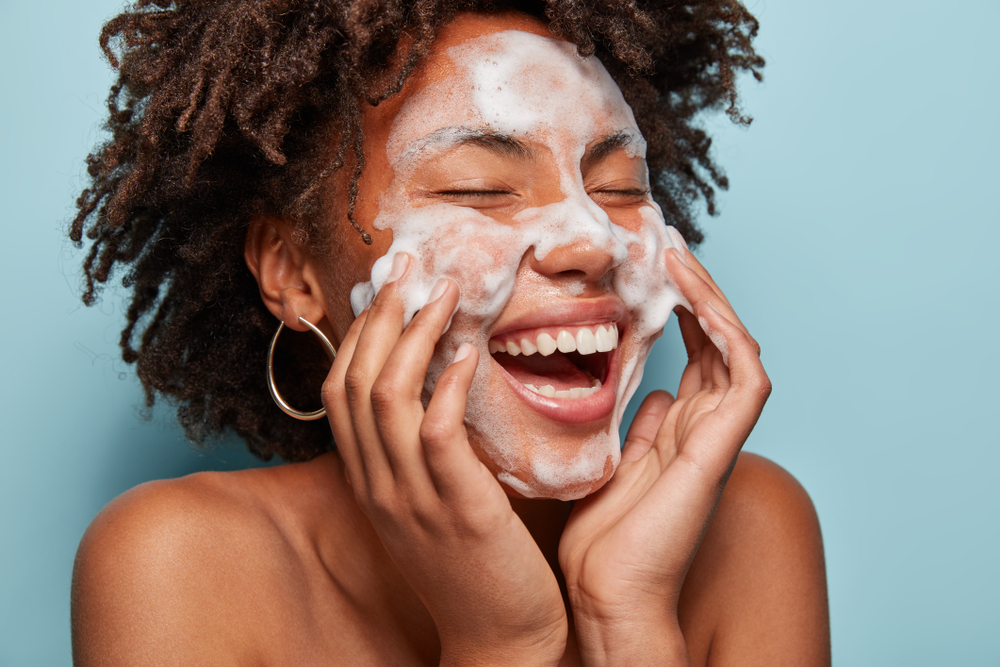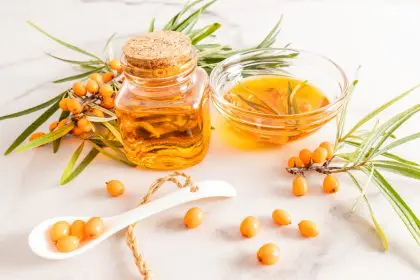Dermatologists are quietly steering patients away from foam cleansers, the bubbly, satisfying products that have dominated skincare routines for decades. The foaming action that makes these cleansers feel so effective at removing dirt and oil is actually too harsh for most skin types, stripping away protective lipids and disrupting the delicate pH balance that keeps skin healthy and resilient.
The shift away from foam cleansers represents a fundamental change in how skin experts understand cleansing and barrier function. What once seemed like thorough, effective cleansing is now recognized as potentially damaging over-cleansing that can create more problems than it solves.
Harsh surfactants damage your skin’s protective barrier
Foam cleansers rely on strong surfactants like sodium lauryl sulfate and sodium laureth sulfate to create their characteristic lather and deep-cleaning action. These detergents are effective at removing oil and debris, but they’re also highly effective at stripping away the natural lipids that form your skin’s protective barrier.
Your skin barrier consists of dead skin cells held together by lipids that prevent water loss and keep irritants out. When foam cleansers remove these protective lipids, they leave your skin vulnerable to dehydration, irritation, and bacterial overgrowth that can lead to acne, sensitivity, and premature aging.
The damage from harsh surfactants accumulates over time, with daily use gradually weakening the skin barrier until it can no longer function properly. This explains why many people experience worsening skin problems despite using products designed to improve their complexion.
Disrupted pH balance triggers inflammatory responses
Healthy skin maintains a slightly acidic pH around 5.5, which supports beneficial bacteria and keeps harmful microorganisms at bay. Most foam cleansers are alkaline, with pH levels between 8-10, which disrupts this delicate balance and can trigger inflammatory responses that manifest as redness, irritation, and breakouts.
When your skin’s pH is disrupted, it can take hours or even days to return to normal, during which time your skin is more susceptible to irritation and infection. Regular use of alkaline foam cleansers keeps your skin in a chronic state of pH imbalance that compromises its natural defense mechanisms.
The pH disruption also affects enzyme activity in your skin, interfering with natural exfoliation processes and lipid production that are essential for maintaining healthy skin texture and appearance. This can lead to dullness, uneven texture, and increased sensitivity over time.
Over-cleansing paradoxically worsens skin problems
Many people with oily or acne-prone skin gravitate toward foam cleansers because they feel cleaner and less greasy after use. However, this squeaky-clean feeling often indicates that the cleanser has removed too much oil, triggering rebound oil production as your skin tries to compensate for the loss of natural protective lipids.
The cycle of over-cleansing and rebound oil production can actually worsen acne and oily skin conditions. When you strip away natural oils, your skin responds by producing more sebum, often leading to greasier skin and more breakouts than before you started using the harsh cleanser.
Over-cleansing can also disrupt the skin microbiome, reducing beneficial bacteria that help maintain skin health while allowing harmful bacteria to flourish. This imbalance can contribute to persistent skin problems that don’t respond well to topical treatments.
Gentle alternatives provide better long-term results
Dermatologists now recommend cream, lotion, or oil-based cleansers that clean effectively without disrupting the skin barrier. These formulations use milder surfactants or cleansing agents that remove dirt and makeup while preserving the skin’s natural protective elements.
Cream cleansers typically contain moisturizing ingredients that help maintain skin hydration during the cleansing process, preventing the tight, dry feeling that indicates barrier damage. These formulations are particularly beneficial for people with sensitive, dry, or mature skin that can’t tolerate harsh cleansing.
Oil cleansers work on the principle that oil dissolves oil, effectively removing makeup and excess sebum while nourishing the skin. Many oil cleansers also contain beneficial ingredients like antioxidants and fatty acids that support skin health rather than compromising it.
Transition strategies minimize adjustment period discomfort
When switching from foam cleansers to gentler alternatives, your skin may need time to adjust and rebalance its oil production. Some people experience temporary greasiness or breakouts as their skin adapts to not being over-cleansed, but this typically resolves within a few weeks.
Start by using a gentle cleanser once daily, gradually increasing to twice daily as your skin adjusts. This allows your skin barrier to recover while still maintaining adequate cleansing to prevent buildup of dirt and bacteria.
Pay attention to how your skin feels after cleansing – it should feel clean but not tight, dry, or irritated. If you experience persistent tightness or dryness after switching to a gentler cleanser, you may need to find an even milder formulation or adjust your cleansing frequency.
Consider double cleansing with an oil cleanser followed by a gentle cream cleanser if you wear makeup or sunscreen regularly. This method ensures thorough removal of products without requiring harsh detergents that damage your skin barrier.
Monitor your skin’s response over several weeks, noting changes in texture, oil production, sensitivity, and overall appearance. Most people find that gentler cleansing leads to improved skin health and fewer problems over time, even if the initial transition period feels less satisfying than foam cleansers.














